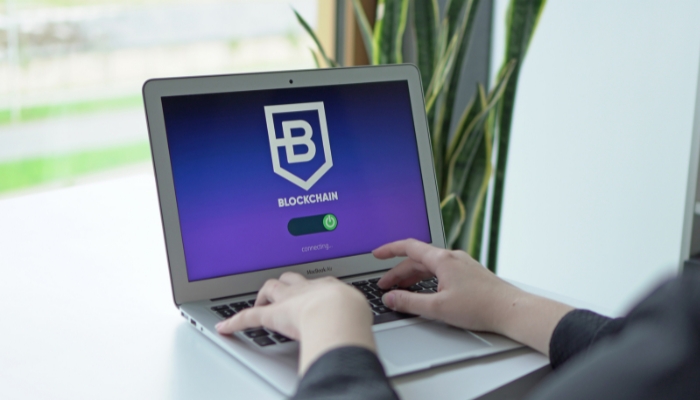
You’re constantly scrolling, liking, and sharing. But have you stopped to consider the dangers lurking on social media?
From the psychological impact on your self-esteem to the potential for cyberbullying, it’s a digital minefield. Not to mention the risk of identity theft from privacy breaches and more.
And let’s not forget the possible addiction. Let’s dive into the dark side of your news feed and navigate its pitfalls together.
The Psychological Impact of Social Media
You’re not alone if you’ve felt the mood swings, anxiety, or even depression that can stem from long-term social media use. These aren’t just sporadic incidents but a growing trend that’s causing significant mental health issues.
The constant exposure to perfectly curated lives can lead to feelings of depression, especially among the youth.
Analyzing your social media behavior is key. How much time are you spending scrolling through feeds? Are you comparing your life to others? This is where social media and youth mental health intersect. The younger generation is particularly vulnerable to body image issues amplified by social media’s unrealistic standards.
In the tech-savvy world we live in, it’s crucial to understand that not everything on social media represents reality. The constant bombardment of filtered photos, exotic vacations, and seemingly perfect lives can distort our perception of normality, intensifying feelings of inadequacy.
Cyberbullying: A Growing Problem
An alarming number of individuals, especially teens, are falling victim to cyberbullying on social media platforms, and it’s a problem that’s escalating rapidly. This form of online harassment presents a direct threat to the mental health and safety of children and young adults who interact on these digital platforms. It’s crucial that you understand the social media risks associated with this growing issue.
The key factors contributing to the rise of cyberbullying include:
- Changes in online behavior, such as: Increased time spent on social media platforms. Frequent and unmonitored social media interactions.
- The anonymity of the Internet, which: Encourages online disinhibition, Allows for the spread of harmful content with little to no repercussions
Cyberbullying of children has become a widespread concern as it can lead to severe psychological and emotional distress. It’s important to recognize the signs, such as changes in mood or behavior, withdrawal from social activities, or a sudden decline in academic performance.
The Role of Social Media in Spreading Fake News

In today’s digital age, social media companies have become the town squares where information is shared and discussed. However, the negative impact of these platforms cannot be overlooked, especially when it comes to the spread of misinformation. The ease with which fake news travels across social media users is alarming. Often, these stories are designed to catch attention, not to inform. As a result, social media exposure to false information can occur rapidly, influencing social media habits and, by extension, the fabric of daily life.
Misinformation can distort what people believe, affecting their decisions and social life. The impact social media has on individuals can lead to a worse sleep quality as people stay up late, scrolling and engaging with content that may not be true. The poor sleep patterns that result from excessive screen time and engagement with sensational content can contribute to a public health issue.
Impact on Public Opinion and Democracy
The influence of social media on public opinion is profound. Scientific evidence suggests that fake news can shape beliefs and attitudes, which is a profound risk to democracy. When the public is misinformed, the very foundation of democratic decision-making is compromised. Technology companies have a responsibility to take action to mitigate this risk. Following Surgeon General’s advisory, it’s essential to promote digital citizenship and ensure that people have access to reliable information.
Pew Research Center has reported that a significant portion of the population cannot distinguish between true and false information online. This creates a collective understanding based on falsehoods, which can have serious consequences for elections and policy-making. It’s crucial for mental health care as well, as believing and spreading misinformation can lead to stress and anxiety.
Case Studies of Misinformation Campaigns
Several case studies highlight the dangers of misinformation campaigns.
For instance, users utilized a well-known social media platform to influence the 2016 U.S. presidential election by spreading dangerous and problematic content to manipulate public opinion. This is not just a potential risk; it’s a reality that has already had an impact on people.
Another case involved a conspiracy theory about a pizza restaurant, which led to a real-world violent incident. This shows that what happens online doesn’t always stay online; it can lead to physical issues and dangers to children who might be exposed to such content.
Johnson & Johnson once had to deal with a misinformation campaign that falsely linked their products to cancer. Despite the considerable evidence supporting the safety of their products, the rumors caused a significant drop in consumer trust. This case underscores the need for meaningful communication and active communication from companies to counteract false narratives.
In conclusion, the spread of misinformation on social media is a multifaceted problem that requires a multifaceted solution. From promoting healthy behaviors and social media literacy to ensuring children safe online environments, everyone has a role to play. By fostering a positive community and encouraging alternative activities that build healthy self-esteem, we can combat the tide of misinformation and its far-reaching effects.
Privacy Breaches and Identity Theft

Beyond cyberbullying, there’s another serious threat you need to be aware of when using social media: privacy breaches and identity theft.
Each time you log into a social media app, perhaps to find classmates, you’re potentially exposing your online identities to a myriad of security risks. Identity thieves are tech-savvy predators, always on the lookout for vulnerable social media accounts. They exploit weak privacy settings and use phishing tactics to trick you into divulging sensitive information. Your personal data, once in the wrong hands, can be used for nefarious purposes.
Privacy breaches are another concern. Social media platforms collect a staggering amount of user data, often more than you realize. This data, if not adequately protected, can be accessed by unauthorized individuals or entities, leading to a breach of your privacy.
In the digital age, maintaining online privacy and safeguarding your identity isn’t just a good practice, it’s an absolute necessity. You must review and tighten your privacy settings, be cautious of the information you share, and remain vigilant about unusual activity on your accounts. The dangers are real, and the stakes are high. Don’t let your guard down.
Social Media’s Influence on Body Image
Shifting gears slightly, let’s tackle another perilous aspect of social media: its profound influence on body image. The onslaught of images and posts you encounter daily can have a significant impact on how you perceive your body, leading to potential body dissatisfaction or even body dysmorphia.
The root of this issue lies primarily in two aspects:
- Social media influencers: Many influencers portray an unrealistic, ‘perfect’ body image, often edited or enhanced. This representation can distort your perception of what’s normal or attainable, leading to dissatisfaction and unhealthy comparisons.
- The drive to emulate: Influencers often promote diets or workout routines that helped them achieve their look, encouraging followers to emulate them. This can lead to unhealthy practices and unrealistic expectations.
Additionally, social media content and representations of peers play a role. Your feed is likely filled with pictures of friends and peers, who often present their ‘best’ selves. This can lead to a skewed perspective of reality.
Furthermore, the comparison trap is a significant factor. Seeing others looking ‘flawless’ can make you scrutinize your appearance more critically, fostering body dissatisfaction and potential dysmorphia.
Navigating this landscape requires critical thinking and understanding the potential distortions in the images and lifestyles presented.
Influence on Children and Teenagers

Age-Appropriate Content and the Role of Parental Control
In the digital landscape, children safe browsing is a priority. Age-appropriate content is crucial because young minds are impressionable and vulnerable to dangerous content, including sexual content and problematic content.
Parental control tools are vital in creating tech-free zones and ensuring that the social media exposure of children is healthy and educational. These tools help in enforcing a family media plan, which can guide when and what children can access online, reducing the risk of harm.
Social Media’s Impact on Development and Behavior
The development and behavior of children and teenagers are significantly influenced by their online interactions. Social media habits formed during these formative years can have lasting effects on their social life and daily life.
There’s ample indicators that excessive use of digital platforms can lead to feelings of loneliness and an increase in loneliness, as virtual interactions might replace real-life social skills development. Social media and technology companies often face criticism for not doing enough to protect young users from potential risks on their platforms.
Educational Implications
The educational implications of social media are a double-edged sword. On one hand, digital technology can be a powerful tool for learning and engagement. Social media benefits include access to a vast array of information and the ability to connect with online communities that foster collective understanding and positive community engagement.
On the other hand, there are evidence gaps in how these platforms can affect learning outcomes. Surgeon General’s advisory and reports from entities like the Pew Research Center suggest that multitasking with social media can lead to poor sleep quality and a decrease in academic performance.
In conclusion, while social media can offer potential benefits to children and teenagers, it’s essential to navigate this space with caution. Promoting digital citizenship, ensuring access to healthy behaviors, and maintaining open lines of communication between parents and children are key to maximizing the positive aspects of social media while mitigating its risks.
The Danger of Social Media Addiction
Now, imagine yourself being unable to resist the urge to check your social media profiles multiple times a day, every day – this is the reality of social media addiction, a rapidly growing issue with serious repercussions.
It’s not just a harmless habit; it’s a condition that leads to potential harms. You’re exposing yourself to a mental health risk. The constant need to check your profiles, the compulsion to post, the obsession with likes and shares – these are signs of an addiction that’s as real as any other, with destructive behaviors to match.
It’s a tech-driven problem that’s often overlooked. And it’s not just about the time wasted. It’s about the anxiety that comes with a fear of missing out, the low self-esteem caused by comparisons, and the risk of depression that comes from feeling isolated in a crowd of virtual friends.
Social media addiction can erode your self-control, distort your perception of reality, and even impair your social skills. It’s a silent epidemic, growing in the shadows of our tech-savvy society, and it’s time to acknowledge its potential harm to our mental health.
Conclusion
So, you’ve navigated the murky waters of social media. It’s clear, isn’t it? The psychological toll, the risk of cyberbullying, privacy breaches, identity theft, and its influence on body image all pose significant dangers.
But it’s the addiction that’s most insidious. You’re tech-savvy, you know the risks. Now, it’s up to you to use social media responsibly. Remember, it’s a tool, not a lifestyle. Don’t let it control your life or define your self-worth.
FAQs on the Dangers of Social Media
What are the most common dangers associated with social media?
The most common dangers include exposure to harmful content, cyberbullying, privacy breaches, and the risk of harm from predators. Additionally, there is a profound risk of developing unhealthy behaviors such as addiction to social media, which can lead to worse sleep quality and reduced physical activity.
How does social media affect mental health?
Social media can lead to mental issues such as anxiety, depression, and low self-esteem. Negative online interactions and the pressure to maintain an amazing life as portrayed by others can exacerbate feelings of loneliness and depression over time, according to findings by the Pew Research Center.
What measures can be taken to protect privacy on social media?
To protect privacy, users should customize their privacy settings. Be cautious about what they share, and be aware of the privacy policies of different social media companies. It’s also wise to create strong passwords and enable two-factor authentication where available.
How can one identify and combat misinformation on social media platforms?
Identifying misinformation requires a critical eye and verification of information through reputable sources. Combatting it involves reporting false information to the platform, educating oneself and others about digital literacy, and following guidelines from public statements by health and technology companies on best practices for discerning the truth.